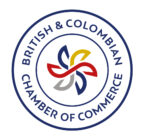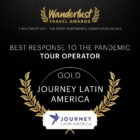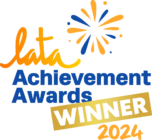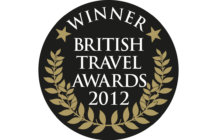A Taste of Peru by Francis Pearce

Journalist Francis Pearce whets his appetite for all things Peruvian.
When we arrived in Lima, the surfers were out among the long, straight waves that roll against the western edge of the capital’s Chorrillos district, and there were 50 or so small boats moored in the harbour, back from a night on a strip of ocean that provides about a fifth of all the world’s fish catch.
Our humble destination was the Cevichería Sonia, the archetype for hundreds of small lunchtime establishments offering fish caught by the husband and served by the wife. The cevichería’s tall painted doors open to reveal a dozen tables covered with bright cloths and plain wooden chairs set out on a concrete floor under a roof of split cane.
(yellow chilli). Terms such as fusion and Novoandino (New Andean) have found their way on to menus, but paradoxically, rather than having its identity diluted, the food has become more Peruvian: an example of how, in Peru, it is perfectly possible to square conflicting ideas.ají amarilloThe culinary revolution taking place in Peru for the last decade or so has seen chefs making novel use of traditional ingredients to give international dishes a Peruvian flavour – quinoa risotto, for example, or stuffing gnocchi with yuca and
The foundations of Peru’s food culture are in the Inca and pre-Inca use of the potato, maize and the chilli. Not only have they been overbuilt with European, African and Asian ingredients and cooking methods to create cuisines within a cuisine, but there are also variations due to Peru’s widely differing geography: the coast, producing mangos and limes; the jungle, with its bananas and manioc, and the highlands and mountains, the source of potatoes, chillies and the cherimoya, or custard apple, the fruit Mark Twain called ‘deliciousness itself’.
The Incas ruled Peru from about 1420 to 1532, when the Spanish conquered. Aside from God and Old World diseases, the Spanish also introduced a long list of foods to Peru. In turn, many Spanish dishes incorporated Inca ingredients to create criollo or ‘mixed’ dishes such as ají de gallina, a spicy chicken stew, and papa a la huancaína, which combines potatoes, peppers and a creamy cheese sauce. Meanwhile, African slaves produced dishes such as picarones, a type of doughnut made from yam flour and eaten with molasses.
After Peru gained its independence in 1821, both French and Italian immigrants also added their influences.
Probably the most influential wave of immigration, however, came in the mid-19th century, with the arrival of 100,000 Chinese workers. Mainly Cantonese, they helped create chifa, a Sino-Peruvian hybrid cuisine best exemplified by lomo saltado (jumping beef), a popular, stir-fried dish of beef, tomatoes, peppers, onions and soy sauce. Lima has some 2,000 cheap and cheerful chifa restaurants. A later wave of Japanese labour brought ‘el sushi’ and sashimi, and Peru’s Japanese restaurants have since gained such a reputation that chefs like Nobuyuki Matsuhisa, who founded the international Nobu chain, have come to Lima to study their craft.
Each region has its culinary curiosities. In the beautiful and fertile Sacred Valley of the Incas between the towns of Pisac and Ollantaytambo, north-west of Cusco, it is cuy, or guinea pig. These are often reared at the backs of chicherías, the small, rough and ready bars where women brew chicha, a thick, tangy corn beer, and luscious pink frutillada, fermented with wild strawberries.
Rather better results come from the pachamanca, a traditional cooking technique which Novoandino cooking mimics by sealing food into earthenware casseroles to retain the moisture and flavour. First a pit is dug and wood lit under large stones for several hours. The wood and ash is then cleared out and layers of meat, vegetables and bananas are put between layers of searing hot rock, covered in leaves and soil and left to steam for about three-quarters of an hour.
A more modest version called the watia is used to cook vegetables when Peruvians picnic, and is also used by the Uros people who live on the floating reed islands of Lake Titicaca. These extraordinary, independent people, whose ancestors fled on to the water from the Incas, are also able to grow potatoes and farm trout on their manmade islands, and keep night herons as domestic fowl in place of chickens for their eggs and meat.
Though cuy and heron might not make it on to international menus, Peruvian food is becoming recognised as a great cuisine. In Lima there are more than 20 cookery schools, many of whose chefs will work abroad. But the best way to grasp the complexity and scope of Peruvian food is to experience it in the country. As the executive director of Lima’s Museo Larco says: ‘All the cradles of civilisation also have important food cultures, and have generated great cuisines.’
Tailor-made holidays
Flexible, custom-made holidays to Latin America created to match your exact requirements: our tailor-made itineraries are as unique as the clients for whom they are designed.
Design my trip


























